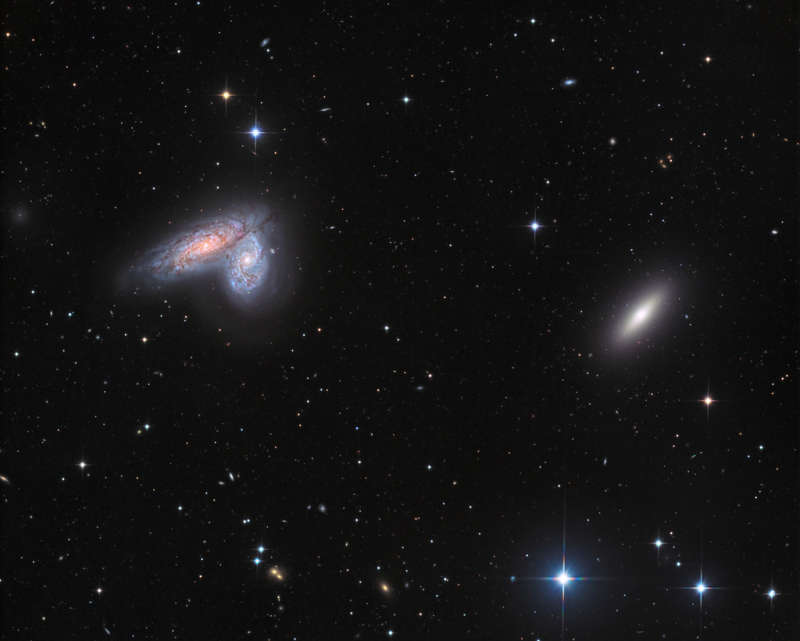Credit & Copyright: CHART32 Team,
Processing -
Johannes Schedler
Explanation:
Spiral galaxy pair NGC 4567 and NGC 4568 share
this
sharp cosmic vista with lonely elliptical galaxy NGC 4564.
All are members of the large
Virgo Galaxy Cluster.
With their classic spiral arms, dust lanes, and star clusters,
the eye-catching spiral pair is also known as the Butterfly Galaxies or
the Siamese Twins.
Very close together, the galaxy twins don't seem to
be too distorted by gravitational tides.
Their giant molecular clouds are
known
to be colliding though and
are likely fueling the formation of massive star clusters.
The galaxy twins are about 52 million light-years
distant,
while their bright cores appear separated by about 20,000 light-years.
Of course, the spiky foreground stars lie within our own Milky Way.
1999 2000 2001 2002 2003 2004 2005 2006 2007 2008 2009 2010 2011 2012 2013 2014 2015 2016 2017 2018 2019 2020 2021 2022 2023 2024 2025 |
Январь Февраль Март Апрель Май Июнь Июль Август Сентябрь Октябрь Ноябрь Декабрь |
NASA Web Site Statements, Warnings, and Disclaimers
NASA Official: Jay Norris. Specific rights apply.
A service of: LHEA at NASA / GSFC
& Michigan Tech. U.
|
Публикации с ключевыми словами:
interacting galaxies - Virgo Cluster - взаимодействующие галактики - скопление галактик в Деве
Публикации со словами: interacting galaxies - Virgo Cluster - взаимодействующие галактики - скопление галактик в Деве | |
См. также:
Все публикации на ту же тему >> | |
